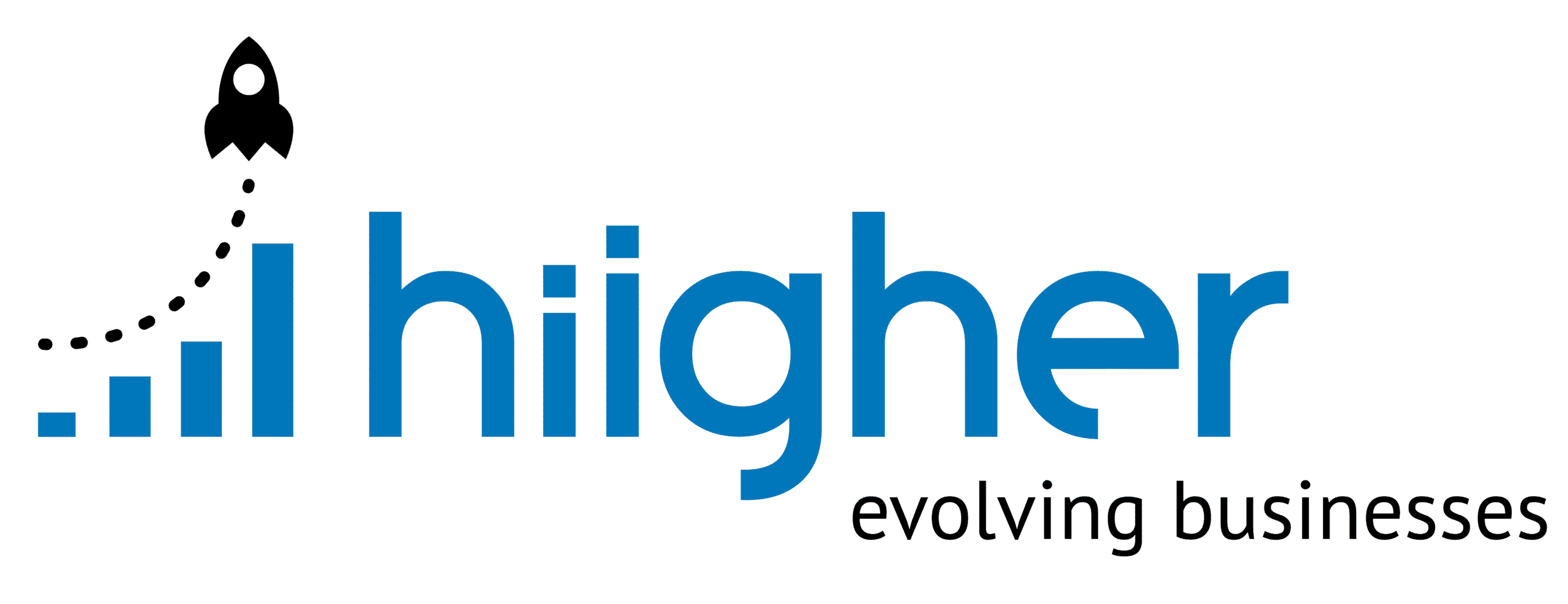- Storytelling in Marketing: How to Build Trust & Drive Growth - September 11, 2025
- Content Syndication: Boost Reach, SEO & Lead Generation - September 11, 2025
- Content Curation: Strategy, Tools & Benefits for Brands - September 11, 2025
That’s where a content calendar changes the game. Think of it as your team’s shared roadmap. It’s not just a list of deadlines, it’s the structure that keeps your messaging consistent, your campaigns timely, and your workflow stress-free.
A content calendar gives you:
- Clarity: Everyone knows what’s being created, when it’s due, and where it’s going.
- Consistency: Your brand voice shows up steadily across blogs, emails, and social posts.
- Control: Instead of reacting last minute, you plan strategically around launches, events, and seasonal moments.
At Hiigher, we’ve seen how brands across eCommerce, SaaS, and education scale faster once they swap chaos for a calendar. When your marketing runs like a system, you free up creative energy to focus on what actually moves revenue.
Contents
- What Exactly is a Content Calendar?
- Why Using a Content Calendar Changes Everything
- The Must-Have Elements of Every Content Calendar
- Choosing the Right Type of Content Calendar
- Analyzing Existing Content Before Building Your Calendar
- Picking the Right Platforms for Your Calendar
- Steps to Build an Effective Content Calendar
- Content Calendar Templates for Social Media
- Editorial Calendars vs. Content Calendars
- Monthly and Yearly Planning Strategies
- Organizing Content Creation Workflows
- Tracking Content Performance and Analytics
- Best Practices for Content Calendar Collaboration
- Customizing Templates for Your Business
- Tools for Automating Content Scheduling
- Managing a Content Repository
- Integrating Content Calendars With Publishing Software
- Maintaining Consistency Across Channels
- Planning Content for Special Campaigns and Events
- Optimizing Content for Multiple Platforms
- Real-Time Updates and Calendar Flexibility
- Privacy and Data Security in Content Planning
- Free vs.Paid Content Calendar Tools
- Tips for Streamlining Your Social Strategy
- Content Calendar Examples to Spark Ideas
- Frequently Asked Questions
- Conclusion
What Exactly is a Content Calendar?
A content calendar is a living document that organizes every piece of content in your pipeline. It tells you:
- What’s being created (blog post, video, social update, email).
- Who’s responsible (writer, designer, editor).
- When it’s due and when it goes live.
- Where it will be published.
- Supporting notes, like links, hashtags, or design requirements.
It’s more than a spreadsheet, it’s a strategy hub. When you can see your big picture laid out, you stop guessing and start planning with intention.
And here’s the part most people miss: your calendar should be flexible. It’s not carved in stone. The best calendars adapt to performance data, shifting goals, and even unexpected trends that you can jump on quickly.
Why Using a Content Calendar Changes Everything
Without a content calendar, marketing feels like juggling knives, something always slips. With one, you create a rhythm your audience can count on.
Here are the three biggest shifts you’ll notice once you adopt one:
| Benefit | What It Looks Like in Real Life | Why It Matters |
| Efficiency | No more scrambling for ideas the night before. Deadlines are set, drafts are in progress, visuals are prepped. | You save hours each week and reduce stress. |
| Strategic Planning | Campaigns line up with holidays, launches, and audience trends. | Content supports actual business goals, not random inspiration. |
| Collaboration | Writers, designers, and managers can all see what’s happening at a glance. | Fewer missed deadlines, fewer “didn’t know” moments. |
When I show clients their first fully built calendar, there’s often a sigh of relief. Suddenly, marketing feels manageable.
The Must-Have Elements of Every Content Calendar
If you want your calendar to actually work (and not just look pretty), you need to include a few essentials. Skipping these is like leaving ingredients out of a recipe, you’ll end up frustrated with half-baked results.
1. Content Types and Formats
Don’t just fill your calendar with blogs. Mix it up. Different audiences connect through different mediums, quick updates on Instagram, thoughtful insights in long-form blogs, engaging how-tos on YouTube.
Here’s a simple way to organize it:
| Content Type | Platform | Why It Works |
| Blog Post | Website | Deep dives that boost SEO and authority |
| Social Update | Quick engagement and real-time relevance | |
| Newsletter | Direct, personal communication | |
| Video | YouTube | Education and behind-the-scenes storytelling |
| Infographic | Shareable, visual explanations |
Mixing formats keeps your brand dynamic and helps you reach people wherever they spend time.
2. Scheduling and Deadlines
Great ideas die without deadlines. A calendar turns “someday” projects into actual results by locking in:
- Draft deadlines (so writers and designers deliver on time).
- Review deadlines (so editors and managers can approve).
- Publish dates (so campaigns hit when they should).
Color coding or tagging can make this crystal clear. For example, green for blogs, blue for social posts, red for high-priority campaigns. That way, your team sees what’s due at a glance.
Regular posting intervals matter too. Whether you publish weekly blogs or daily TikToks, your audience learns to expect your content, and that builds trust.
3. Visual Assets Planning
Words may build the foundation of your message, but visuals bring it to life. A solid content calendar isn’t complete without a clear plan for your images, videos, and graphics.
Think of how often a great campaign gets delayed because “we’re still waiting on the graphics.” Planning visual assets in advance eliminates those bottlenecks.
Here’s a smart way to manage it inside your calendar:
- List the required assets, is it a carousel for Instagram, a banner for LinkedIn, or a short-form video?
- Specify formats and sizes, Instagram Stories vs. TikTok have very different dimensions.
- Track progress, Mark whether assets are drafted, in design, or final.
- Link directly to files, Connect your calendar to a shared media library so everyone can grab the right version instantly.
At Hiigher, we often centralize client visuals in one shared folder connected to their calendar. That simple step cuts down endless Slack messages asking, “Where’s the updated graphic?”
Choosing the Right Type of Content Calendar
Not every business needs the same setup. A solo creator posting twice a week on Instagram doesn’t need the same tool as a scaling SaaS company managing multiple campaigns.
The two main approaches are:
- Platform-specific templates (built for one channel at a time).
- All-in-one scheduling tools (central dashboards that cover everything).
Platform-Specific Templates
These are great if you want deep focus on one channel. For instance:
- Instagram calendars that include hashtags, reels, and story planning.
- LinkedIn templates for thought-leadership posts and engagement tracking.
- Pinterest boards for visual campaigns tied to seasonal trends.
The advantage? You’re tailoring content exactly to how the platform works. The downside? If you’re running multiple platforms, juggling templates gets messy.
All-in-One Scheduling Tools
When your marketing spans several platforms, centralizing everything saves your sanity. Tools like HubSpot, Hootsuite, or CoSchedule let you:
- Schedule posts across Instagram, LinkedIn, Facebook, TikTok, and more.
- Automate publishing (no more “Did anyone post this morning?” panic).
- Track analytics from a single dashboard.
- Build approval workflows so nothing slips through without review.
| Feature | Why It Matters | Example Use Case |
| Centralized Planning | You see every channel at once | Perfect for campaigns spanning multiple platforms |
| Approval Workflows | Keeps quality high | Editors can approve posts before they go live |
| Analytics | Turns guesswork into data | Learn the best time of day to post |
If your team collaborates remotely, these tools are worth every penny because they keep everyone in sync.
Analyzing Existing Content Before Building Your Calendar
Here’s the truth: a content calendar isn’t just about planning forward. It’s also about looking backward.
Before you start filling boxes with new ideas, ask: What has actually worked for us so far?
Run a content audit and gather answers to these questions:
- Which blog posts are driving the most traffic?
- Which Instagram Reels get the most saves and shares?
- Which email subject lines pulled the highest open rates?
- Which campaigns led to actual conversions, not just likes?
Then categorize. For example, you might discover that short-form video crushes it on TikTok but flops on LinkedIn. Or that your long-form blogs outperform quick updates in Google rankings.
Tools like Google Analytics, Meta Insights, or HubSpot dashboards can make this process easier. The point isn’t just to measure, it’s to double down on what works and ditch what doesn’t.
Pro tip: Don’t just look at engagement. Track the full funnel. A funny meme might rack up likes, but if it doesn’t drive traffic, sign-ups, or sales, it may not deserve space in your calendar.
Picking the Right Platforms for Your Calendar
Not every platform deserves your attention. The temptation is to “be everywhere,” but spreading thin usually leads to weak results. Instead, choose based on audience fit and content type.
Platform Audience Demographics
Here are a few quick snapshots that can guide decisions:
- TikTok: 60% of users are 16–24. Great for Gen Z-driven brands and trends.
- Instagram: Strong with both Gen Z and millennials. Great for visuals and short videos.
- Facebook: Still powerful for 25–34 year-olds, especially buyers with spending power.
- LinkedIn: 61% of users are professionals aged 25–34. Best for B2B and thought leadership.
- Pinterest: 77% female audience. A sweet spot for fashion, home, and DIY industries.
Content Format Compatibility
Matching your formats to the platform is half the battle. For example:
- Instagram = high-quality visuals, carousels, and reels.
- LinkedIn = professional insights, stats, and articles.
- TikTok = quick, creative, relatable short-form video.
- YouTube = longer, in-depth tutorials and storytelling.
When you align platform and format, your calendar works harder for you.
Steps to Build an Effective Content Calendar
Building a content calendar isn’t complicated, but it does require structure. Think of it like training for a marathon: you don’t just show up on race day and hope for the best, you follow a plan.
Here’s the framework we use when helping brands at Hiigher get their calendars in shape:
- Audit & Plan
Review your past content. What worked? What flopped? Set clear goals: do you want more reach, deeper engagement, or higher conversions? Decide how often you’ll publish, daily, weekly, monthly. - Organize & Assign
Outline content type, topic, responsible team member, deadlines, and publish dates in one shared calendar. Accountability turns intentions into action. - Collaborate & Update
A calendar isn’t static. Share it with your team, review it weekly or monthly, and adjust based on what’s working. Flexibility is what keeps you aligned with both your audience and your business goals.
When you follow these steps, your calendar becomes more than a document, it’s your marketing command center.
Content Calendar Templates for Social Media
If managing multiple social platforms feels overwhelming, you’re not alone. That’s why content calendar templates exist.
Templates make it easy to:
- Plan posts across Instagram, LinkedIn, and Facebook in one view.
- Store post titles, captions, images, and links in one place.
- Duplicate and adapt calendars for different campaigns.
Popular tools like HubSpot, Hootsuite, and SocialBee come with ready-to-use templates that you can customize. They let you drop in the essentials (content type, publish date, image link, hashtags) and then schedule with just a few clicks.
Pro tip: Keep one master template that covers your whole brand, and create smaller campaign-specific calendars as needed. This way, your big-picture strategy never gets lost in the weeds.
Editorial Calendars vs. Content Calendars
A lot of marketers confuse editorial calendars with content calendars, but they’re not the same.
- Editorial calendars focus on long-form written content like blogs, articles, and newsletters. They track deadlines, themes, and writer assignments.
- Content calendars cover the bigger picture: blog posts, yes, but also social posts, videos, email campaigns, and distribution channels.
Here’s how you can use them together:
- Editorial Calendar: Keeps your publishing consistent and ensures you’re covering the right themes.
- Content Calendar: Shows how each piece fits into your overall marketing mix, so you don’t miss chances to repurpose and amplify.
- Integration: Sync them. A blog post in your editorial calendar should also appear in your content calendar, with social snippets and email promotions tied to it.
The combo gives you both depth and breadth.
Monthly and Yearly Planning Strategies
Planning content week by week is fine for execution, but if you want growth, you need to zoom out. That’s where monthly and yearly planning comes in.
Annual Campaign Mapping
Think of this as your bird’s-eye view. Assign key themes and campaigns to each month, aligned with business goals. For example:
- January: New Year campaigns, product launches.
- May: Summer sales or seasonal promotions.
- November: Black Friday and holiday campaigns.
Annual planning helps you anticipate high-engagement moments instead of scrambling when they arrive.
To make it stronger:
- Review last year’s data to see what performed best.
- Map campaigns to holidays, industry events, and customer buying cycles.
- Revisit the plan quarterly and adjust based on performance.
Seasonal Content Prioritization
If annual mapping is your compass, seasonal planning is your day-to-day GPS. Audiences think in seasons, back-to-school, summer break, holiday rush. Your calendar should reflect that.
For example:
- Valentine’s Day: Lifestyle brands can highlight gift guides.
- Halloween: Education companies can run themed challenges or tips.
- Black Friday: SaaS brands can push limited-time offers.
Planning seasonal content early ensures your visuals, copy, and campaigns are ready to go when engagement peaks.
Organizing Content Creation Workflows
Even the best calendar fails without a solid workflow behind it. A workflow ensures your team knows exactly what to do, when to do it, and who’s responsible for what.
Here’s how to build one that sticks:
- Define Roles Clearly
Writers, designers, editors, and managers should all know their exact responsibilities. Nothing slows a project down faster than “I thought someone else was handling that.” - Use Project Management Tools
Tools like Notion, Trello, or Asana are perfect companions to your content calendar. They let you assign tasks, set deadlines, and track progress in real time. - Set an Approval Process
Establish checkpoints for reviews and approvals. For example: drafts due Monday, edits back by Wednesday, final approval by Friday. When everyone knows the timeline, there’s no last-minute scramble.
At Hiigher, we often recommend combining your content calendar with a project management tool. That way, planning and execution live side by side, keeping the team focused and accountable.
Tracking Content Performance and Analytics
How do you know if your calendar is actually working? You measure. Without tracking, you’re just guessing, and guessing rarely scales.
Key metrics to monitor include:
- Engagement: Likes, shares, comments, saves.
- Traffic: Website visits driven by content.
- Conversions: Sign-ups, downloads, purchases.
- Click-Through Rates: How many people act on your CTAs.
Google Analytics, HubSpot dashboards, and native social media insights are your best friends here. But don’t just glance at the numbers, analyze them.
Example: If your Instagram reels are hitting high engagement but driving little site traffic, that’s a signal to adjust CTAs or experiment with different captions.
And don’t forget A/B testing. Test subject lines, post times, or even thumbnail designs. Small tweaks can reveal what resonates best with your audience.
Best Practices for Content Calendar Collaboration
Calendars are most powerful when they’re collaborative. A shared calendar turns marketing from a solo sprint into a team sport.
Real-Time Team Updates
Use tools like Google Sheets, Notion, or Airtable where multiple team members can edit and comment in real time. This prevents the dreaded “version confusion” and keeps everyone on the same page.
Add simple visual cues, color codes or tags, for quick clarity. For instance, yellow for “draft,” blue for “in review,” and green for “ready to publish.”
Streamlined Approval Workflows
Without an approval system, bottlenecks are inevitable. Build a simple flow: draft → review → approval → publish.
Set time limits on reviews (e.g., 48 hours max) so projects don’t stall. Use reminders or automation in your project tool to keep the process moving.
Role-Based Access Control (RBAC)
Not everyone needs to see or edit everything. By assigning permissions based on roles, you avoid accidental edits or confusion. Writers only need to see their drafts, while managers can oversee the entire pipeline.
This isn’t just about security, it’s about focus. The fewer distractions, the smoother the workflow.
Customizing Templates for Your Business
There’s no one-size-fits-all calendar. A small lifestyle brand has very different needs than a B2B SaaS company. That’s why customizing templates is essential.
When tailoring a template:
- Start with goals: Do you want brand awareness, conversions, or thought leadership?
- Adjust properties: Add or remove fields like “campaign theme,” “CTA,” or “asset link.”
- Match brand identity: Customize visuals, covers, icons, and color codes, so your calendar feels like part of your brand.
- Keep it practical: Don’t overload your calendar with fields you’ll never use. A bloated calendar is as bad as no calendar.
Think of templates as scaffolding. They give you structure, but you should rebuild them to fit your business instead of forcing your business into them.
Tools for Automating Content Scheduling
A content calendar is your plan, but automation is what makes that plan effortless. Without automation, you’ll always be stuck in manual mode, logging in to each platform, pasting captions, uploading images, double-checking times. It’s exhausting.
Automation tools solve that by letting you schedule once and publish everywhere.
Here’s how they help:
- Multi-Platform Scheduling
Tools like Hootsuite and Buffer allow you to schedule posts across Instagram, LinkedIn, TikTok, and more from a single dashboard. Imagine setting up next week’s content in one sitting and knowing it will roll out automatically. - AI-Powered Assistance
Platforms such as SocialBee have AI copilots that help draft posts, suggest publishing times, and even recycle top-performing content. MeetEdgar, for example, reuses your best posts so your feed never goes silent. - Collaboration and Analytics
CoSchedule and Sprout Social combine scheduling with analytics and approvals, making them great for larger teams. You’re not just scheduling, you’re tracking what works and improving as you go.
If you’re managing multiple platforms or working with a distributed team, these tools don’t just save time, they protect your consistency.
Managing a Content Repository
As your content library grows, keeping track of everything becomes a challenge. That’s why building a content repository is just as important as your calendar.
Think of it as your brand’s digital vault. It holds every blog draft, video, image, infographic, and caption your team has created.
A strong repository should include:
- Clear folders organized by type (blogs, graphics, videos).
- Naming conventions so files are easy to find.
- Tags or categories to group content by campaign, theme, or platform.
- Regular cleanups to remove outdated content and keep the system fresh.
When your repository is clean, repurposing becomes a breeze. That Instagram carousel from three months ago? It could become a LinkedIn infographic today. That blog snippet? A perfect email teaser.
Hiigher often helps clients set up content repositories alongside calendars because it doubles the return on every asset they create.
Integrating Content Calendars With Publishing Software
A great calendar gets even better when it talks directly to your publishing tools. Integration saves hours of manual copy-pasting and reduces errors.
Seamless Template Upload
Most platforms now let you upload a CSV or spreadsheet with all your planned content. Tools like HubSpot, Buffer, and Hootsuite allow you to:
- Download their calendar template.
- Fill it with your post details, dates, copy, links, hashtags.
- Upload it for instant scheduling.
This eliminates the risk of typos or forgotten posts because everything comes straight from your master calendar.
Automating Multi-Platform Scheduling
Bulk uploads are just the start. True power comes from automation features like:
- Color-coded dashboards for post statuses (draft, scheduled, published).
- Best-time-to-post suggestions based on audience behavior.
- Cross-platform publishing so one campaign launches everywhere at once.
With automation, you not only stay consistent but also hit audiences at peak times without babysitting every post.
Maintaining Consistency Across Channels
Consistency is one of the most underrated elements of content marketing. Your audience should recognize your voice, visuals, and message whether they see you on Instagram, LinkedIn, or in their inbox.
Here’s how to use your calendar to keep it tight:
- Schedule everything in one place so tone and timing stay aligned.
- Use templates for captions, emails, or post structures that reflect your brand voice.
- Audit regularly to see which themes or formats resonate most, then replicate them across platforms.
When your content feels cohesive, you build trust. And in a crowded digital space, trust is the currency that keeps people coming back.
Planning Content for Special Campaigns and Events
If your everyday posts are the steady heartbeat of your brand, then special campaigns are the adrenaline shots. They create urgency, capture attention, and often drive the biggest spikes in engagement and revenue.
But here’s the catch: campaigns flop when they’re rushed. A solid content calendar prevents that by giving you time to plan, design, and align your message with key dates.
How to Plan Campaign Content in Your Calendar
- Mark important dates early, product launches, holidays, conferences, or industry events.
- Break content into phases, teasers before, the main push during, follow-ups after.
- Assign formats strategically, maybe a blog to announce, social stories to hype, and an email to convert.
- Segment your audience, tailor messages for buyers, prospects, or loyal customers.
By building campaigns directly into your calendar, you avoid last-minute chaos and ensure every piece ladders up to your objectives.
Optimizing Content for Multiple Platforms
Not all content performs equally everywhere. That’s why one of the smartest moves you can make is tailoring your assets to fit the strengths of each platform.
Here’s how to adapt one idea across channels:
- Instagram: Turn a blog post into a carousel with punchy visuals.
- LinkedIn: Share a professional take with stats and industry commentary.
- TikTok: Record a quick behind-the-scenes or storytelling video.
- Email: Send a digest highlighting the key takeaways with a strong CTA.
Research shows consistent cross-platform branding can boost revenue by 23%. But consistency doesn’t mean copy-paste, it means adapting your voice and visuals while keeping your core message intact.
Automation tools (like HubSpot or Buffer) make this much easier, letting you create variations and schedule them all from the same place.
Real-Time Updates and Calendar Flexibility
Even the best-laid content plans need room to bend. Trends pop up overnight, breaking news hits, or your audience starts buzzing about something unexpected. A rigid calendar risks making you sound out of touch.
That’s why flexibility is key. A modern calendar should let you:
- Switch between daily, weekly, and monthly views depending on the task at hand.
- Edit in real time so changes are visible to everyone instantly.
- Integrate with analytics tools so performance data feeds back into your plan.
Pro tip: Use color-coded systems to mark status, draft, scheduled, published, so your team always knows where content stands.
This flexibility lets you stay organized without losing the ability to act fast when an opportunity arises.
Privacy and Data Security in Content Planning
Here’s something many teams overlook: your content calendar holds sensitive information. Think product launch dates, internal campaigns, or customer data. If that leaks, competitors or bad actors could get an easy win.
Protecting your content planning is as important as creating the content itself.
Best Practices for Security
- Use secure tools, pick platforms with encryption, role-based access, and audit trails.
- Limit permissions, not everyone needs full access. Writers may only need to see their tasks, while managers oversee the whole calendar.
- Train your team, make data security part of onboarding and regular check-ins.
- Audit regularly, check for outdated users or unused integrations that could create risks.
When your team knows security is part of the workflow, you reduce risks and build trust with your audience.
Free vs.Paid Content Calendar Tools
One of the most common questions marketers ask is: “Do I really need to pay for a content calendar tool?”
The answer depends on your needs.
- Free Tools:
Great for solo creators or small businesses just starting out. Options like Google Sheets, Trello, or free templates from HubSpot give you structure without extra cost. They cover the basics, scheduling, organizing, and team visibility. - Paid Tools:
Worth it if you’re managing multiple platforms, a bigger team, or advanced campaigns. Tools like Hootsuite, SocialBee, or Sprout Social offer automation, analytics, approval workflows, and collaboration features. Prices often start around $19–$29 a month, and many include free trials so you can test before committing.
If your marketing goals are growing, investing in a paid tool is like upgrading from a paper planner to a full project management system. It pays for itself in saved time and fewer mistakes.
Tips for Streamlining Your Social Strategy
Juggling multiple platforms can feel overwhelming, but with the right approach, you can simplify without losing impact.
Here are three practical tips:
- Start with Templates
Use customizable social media content calendar templates (like HubSpot or Notion-based ones). Tailor them to fit your campaigns instead of reinventing the wheel each time. - Create a Centralized Content Repository
Track all your assets, blogs, images, videos, and captions, in one shared library. Repurpose instead of recreating. That Instagram carousel from last month? It could be reimagined as a LinkedIn infographic today. - Plan Monthly Check-Ins
Sit down with your team every month to review the calendar. Align content with business goals, upcoming events, and campaign needs. This keeps your strategy flexible and intentional.
Content Calendar Examples to Spark Ideas
Sometimes the best way to learn is by seeing how others do it. Here are a few examples:
- Blog Management: Calendars planned months ahead with contributor tags and deadlines to keep publishing consistent.
- Social Media: A calendar outlining captions, images, links, and publish dates, ensuring messaging stays aligned across Instagram, Facebook, and LinkedIn.
- Email Marketing: Calendars designed around promotions, blog features, or seasonal campaigns, segmented by audience for higher engagement.
These examples show that with the right structure, a content calendar is more than a schedule, it’s a growth engine.
Frequently Asked Questions
What does a content calendar actually do?
It helps you plan, schedule, and manage content across all your platforms. Instead of last-minute scrambling, you always know what’s coming up, who’s responsible, and when it goes live.
How do I create a content calendar?
Start by brainstorming ideas, then use a template or tool to organize them. Assign tasks, set deadlines, and regularly review results so you can adjust over time.
Does Canva have a content calendar?
Not directly. Canva is a design tool, but you can create visual plans there and export them into your calendar system.
Does Google have a content calendar tool?
Not specifically, but you can combine Google Calendar and Google Sheets for a free DIY version. Sheets for planning, Calendar for reminders.
Conclusion
Here’s the bottom line: without a content calendar, marketing feels chaotic. With one, you create a steady rhythm that keeps your brand visible, consistent, and connected with your audience.
A content calendar isn’t just about organization, it’s about growth. It helps you stay on top of deadlines, make data-driven decisions, and scale your strategy with confidence.
At Hiigher, we’ve seen firsthand how a well-structured calendar can turn messy, ad-hoc marketing into a system that fuels measurable results. Whether you’re running a one-person shop or leading a fast-scaling team, the right calendar will help your content not just show up, but stand out.
So don’t wait until your next campaign feels rushed or your team feels overwhelmed. Start building your content calendar today, and give your brand the consistency it deserves.
How useful was this?
Click on a star to rate it!
Average rating 0 / 5. Vote count: 0
No votes so far! Be the first to rate this post.
We are sorry that this post was not useful for you!
Let us improve this post!
Tell us how we can improve this post?




